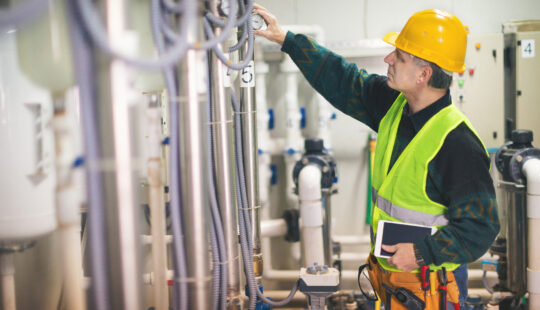The end of the year is a good time to think about what lies ahead of us. I believe there are some business, technical, and social developments that will affect organizations across industries.
If you have a moment, grab a cup of coffee and read about eight industry trends I expect to be here to stay.
Everything-as-a-Service
Making and selling products has been the predominant business model in multiple industries for many decades. In contrast, delivering services used to only be associated with a few sectors, such as telecommunications. Those days are gone. From sports equipment and streaming services in B2C to machines and software in B2B, there is hardly a product or service that customers do not expect to get on a subscription basis. In short, the way products and services are consumed, ordered, and paid for has changed, and I’m sure this trend will continue to transform revenue streams, product design, and customer engagements across industries.
Integrated Mobility
Trends are connected, and so is everything-as-service and the future of mobility. Urban infrastructures used to be built for cars moving between suburbia and city centers. With more and more people moving to cities, this is no longer feasible. I have no doubt, however, that new concepts and digital technologies will ensure convenient, safe, and sustainable mobility in the future. We can already see a transition toward integrated mobility solutions starting with an individual mobility element, such as a car or bike, and integrating with mass mobility solutions — ones that people pay for on a usage base.
New Customer Pathways
When it comes to customer experience, industry lines are blurring and business models are blending. Both consumers and business customers expect a cohesive experience across any brand interaction they may have. Customers also demand personalized experiences that are available anywhere, at any time. Sustainability is another driving force. Customer expectations will continue to rise, and I’m excited to see businesses deliver one experience that goes beyond the sales process and keeps customers coming back.
Lifelong Health
Being healthy is essential. Considerable medical progress has been made over the past decades, with technology contributing significantly to this. Beyond the healthcare space, digital devices that collect and compile health and habit-related data are used increasingly in lifestyle areas. Devices such as smart watches, intelligent scales, and sensor-studded workout machines create a massive set of health and activity data. While this trend generates new possibilities for healthcare and life sciences to advance diagnostics and treatment, I also see implications for the consumer products, retail, and insurance industries.
The Future of Capital and Risk
Governed by national and international regulations, banks and insurers play the key role in operating the world’s financial system. In the last few years, fintech and insurtech innovators have changed the way capital is raised and allocated, risks are transferred, and payments are handled in our global economy. Today, products and services in banking and insurance can be 100% digital, which is why I expect this market to continue to be subject of rapid change.
Sustainable Energy
Stopping climate change and its effects on our planet is one of the biggest challenges of the 21st century and the transition to a sustainable economy is one of the fundamental needs of our time. Emission-free energy is one of the pillars of sustainability. Many solutions for an energy transition are already here. What matters now is to implement them at scale — and I think every industry will be affected. Reinventing the global energy system is a massive undertaking that will involve all nations, all industries, and all people.
Circular Economy
Another crucial pillar of sustainability is circular economy. For too long, our global economy has been linear and single use: companies take resources, produce things, and users throw them away. As a result, humans not only consume more resources than our planet can regenerate, but we’re also piling up waste. The transition to a circular economy both protects our environment and opens new business opportunities. I’m convinced that the reward of circular business models will far outweigh the investments companies need to make today.
Resilient Supply Networks
In today’s globally connected economy, supply chain disruptions can have profound consequences. This includes shortages and delays of materials and products leading to empty shelves and higher prices. To build resilience, companies need transparency into their supply chains to enable intelligent planning. This requires close collaboration and data exchange between trading partners in an open, yet secure, digital network. Creating this real-time transparency across today’s complex supply chains is a huge effort. But I think it’s the best — if not the only — way to enable companies to respond to and anticipate supply and demand disruptions.
These are the trends that I see shaping the world of business, the world around us, and the SAP product portfolio — and continuing to do so across industries in 2023 and beyond.
President of Industries and Customer Advisory Peter Maier and his team have so much in-depth industry knowledge that we thought it was worth collecting it in a book. To learn more about these cross-industry trends, how business leaders are responding to them, and what role SAP solutions play, take a look at Business as Unusual with SAP: How Leaders Navigate Industry Megatrends.
Thomas Saueressig is a member of the Executive Board of SAP SE.



